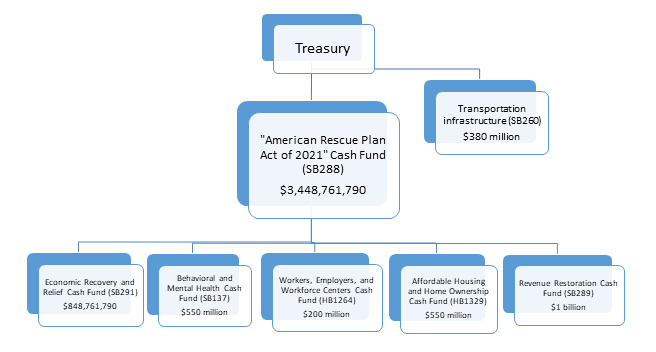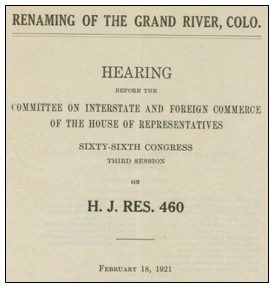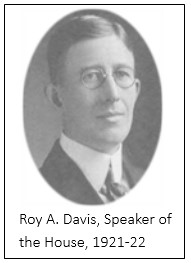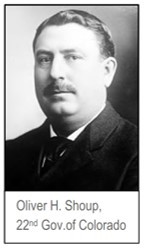by Ed DeCecco
 As part of the federal “American Rescue Plan Act of 2021” (ARPA), Colorado received $3,828,761,790 from the Coronavirus State Fiscal Recovery Fund. That is quite a bit of money. For context, consider that, if the state received this aid in $1 bills, the stack of cash would be almost 260 miles high, or if those bills were placed end to end, they would loop the earth almost 15 times! Thankfully, Treasury Secretary Yellen didn’t pay the state in singles.
As part of the federal “American Rescue Plan Act of 2021” (ARPA), Colorado received $3,828,761,790 from the Coronavirus State Fiscal Recovery Fund. That is quite a bit of money. For context, consider that, if the state received this aid in $1 bills, the stack of cash would be almost 260 miles high, or if those bills were placed end to end, they would loop the earth almost 15 times! Thankfully, Treasury Secretary Yellen didn’t pay the state in singles.
Nor did the state receive the money unconditionally. Under ARPA, this money must be used for any of the following purposes:
- To respond to the public health emergency with respect to the Coronavirus Disease 2019 (COVID–19) or its negative economic impacts;
- To provide premium pay for essential workers;
- For the provision of government services to the extent of revenue lost due to COVID-19; and
- To make necessary investments in water, sewer, or broadband infrastructure.
The state cannot, however, use this money for a pension payment nor to backfill revenue lost as a result of a tax cut. The federal Treasury Department issued an interim regulation that, among other things, identified a number of permissible uses under each of the broad categories above and established a methodology for determining lost revenue.
Unlike the federal COVID relief aid the state received through the CARES Act, the General Assembly assumed responsibility over this ARPA money. And because the state need only obligate this money by the end of 2024, and spend it before the end of 2026, it was unnecessary to appropriate all of the money immediately. Instead, the 73rd General Assembly established a framework to allocate the money to several cash funds, which prioritized certain permissible uses, and appropriated a decent portion consistent with those uses.[1] Here is the allocation, with the amounts and related legislation noted:
Most of the money was first deposited in the “American Rescue Plan Act of 2021” cash fund (ARPA fund), which included general requirements related to the money, such as reporting, that apply even after the money is transferred to and spent from any another fund (recipient fund). If the recipient fund has any other money in it, then, to avoid commingling of the funds, the state controller or department is required to create a companion fund that only has the federal funds but is otherwise legally identical.[2]
Now, you may be thinking, “No wonder the author went to law school. He is terrible in math, as the amount transferred from the ARPA fund is significantly less than the amount transferred to it.” But that wasn’t a mistake. After the required transfers were made, $300 million was left in the ARPA fund, and that money is continuously appropriated to any department designated by the Governor for any allowable purpose under the Federal Act. In this way, the General Assembly returned the favor for Governor Polis giving it control over some of the COVID relief funds from the CARES Act.
Still, the lion’s share of the money was transferred from the ARPA fund to other cash funds. The revenue restoration cash fund includes a portion of the money that the state can use for the provision of government services to the extent of revenue lost due to COVID-19. This money is basically for revenue backfill, and it is available for “government services,” which makes it like a baby general fund. No money was appropriated from this fund last session, although the General Assembly did apportion the money to be spent in roughly equal shares over three fiscal years. The other amount that the state thus far has available for “government services” is the $380 million that was directly deposited into Department of Transportation cash funds and allocated under SB21-260.
provision of government services to the extent of revenue lost due to COVID-19. This money is basically for revenue backfill, and it is available for “government services,” which makes it like a baby general fund. No money was appropriated from this fund last session, although the General Assembly did apportion the money to be spent in roughly equal shares over three fiscal years. The other amount that the state thus far has available for “government services” is the $380 million that was directly deposited into Department of Transportation cash funds and allocated under SB21-260.
The behavioral and mental health cash fund, the workers, employers, and workforce centers cash fund, and the affordable housing and home ownership cash fund were all established to focus on the public health emergency with respect to COVID-19 or its negative economic impacts, with each focusing on specific areas indicated by the fund’s name. The money in the economic recovery and relief cash fund may likewise be used for a number of purposes that fit that prong of the federal law, but the General Assembly may also appropriate the money to make necessary investments in water, sewer, or broadband infrastructure. During the 2021 session, the General Assembly appropriated or transferred over a half billion dollars from these four funds,[3] which means there is still plenty left to be spent over the next few legislative sessions. And to help it spend this remainder, the General Assembly created task forces in SB21-137, SB21-291, and HB21-1329. In our next article, we’ll go over these interesting task forces in detail.
[1] Can this allocation change in the future? You bet it can because the General Assembly’s plenary power is not limited by a statute.
[2] So when it’s all said and done, this framework is responsible for quite a few new cash funds. Apparently the concluding message in a prior LegiSource article, https://legisource.net/2017/02/17/a-legislators-guide-to-creating-cash-funds/, did not resonate.
[3] For a detailed explanation of how the money was spent, see pages D-8 to D-10 of the Appendix to the Joint Budget Committee Staff’s Appropriation Report Fiscal Year 2021-22, https://leg.colorado.gov/sites/default/files/fy21-22apprept.pdf.















